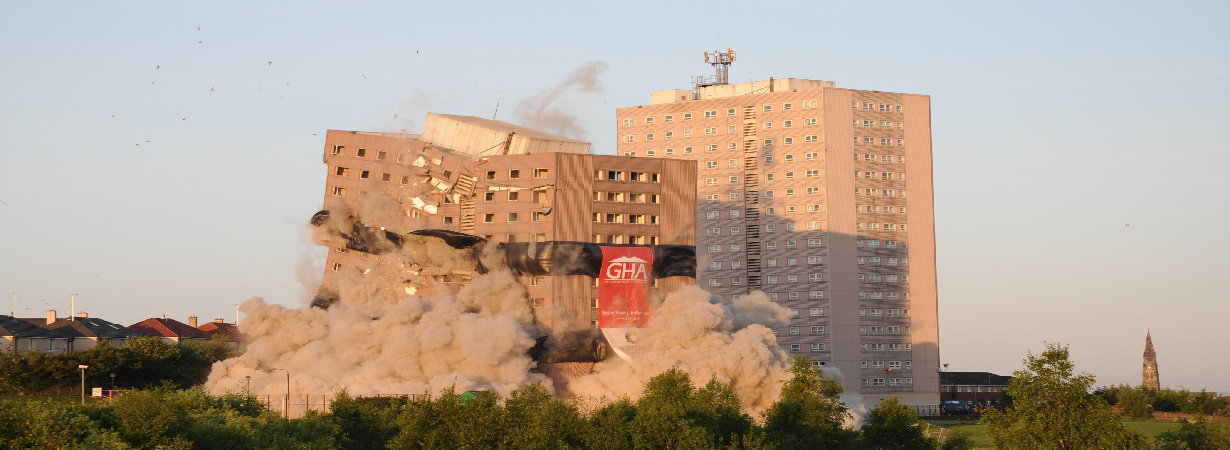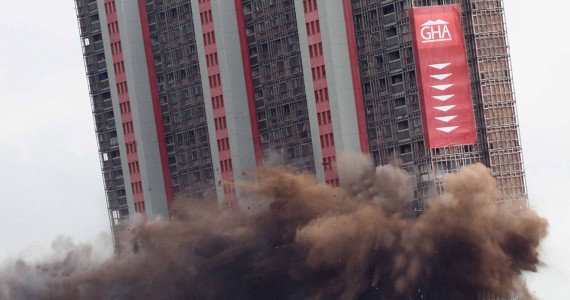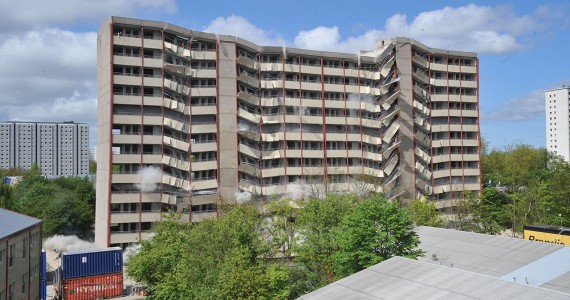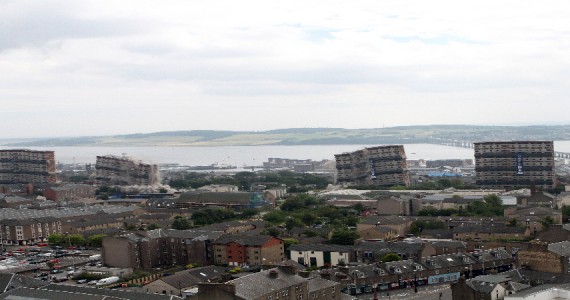15 Forge Place, Germiston, Glasgow

18 Storey building demolished at dawn
The relatively straightforward explosive demolition of an 18-storey tower block has been made considerably more complicated by the need for an overnight evacuation of some 500 local residents.
The sheer number of variables involved in any explosive demolition project means that there is no such thing as a straightforward contract. But having demolished more than 12 tower blocks in and around Glasgow during the past 4 years, the Safedem team are well rehearsed. So when confronted with the contract to implode Forge Place, a fairly ordinary precast panel construction 18-storey block built off a heavily reinforced concrete podium, it probably felt like business as usual. But the presence of an active and busy railway line that ran through the prescribed exclusion zone was to complicate matters somewhat.
In order to keep the trains running on schedule, it was agreed to carry out the implosion at 05.45 on a Sunday morning, allowing Network Rail to carry out a post-demolition inspection before re-opening the line. An early start is all part of the job for the average demolition crew. But the timing of the blow down also meant that around 500 residents had to be evacuated from their homes within the exclusion zone the night before.
Safedem’s experienced community liaison team regularly visits housing estates and schools to explain and demystify the demolition process. In addition to the logistics involved in locating hotel rooms and transportation to relocate resident, the liaison teams were working in an uncharted territory. To the best of our knowledge, no UK demolition company has previously attempted an overnight evacuation on this scale.
With local residents relocated to hotels across the Glasgow district and the exclusion zone established, the perimeter was policed by almost 100 Safedem sentries and Strathclyde Police personnel throughout the night as the explosives team carried out their safety checks and final connections.
At 05:45 on Sunday 18 May 2008, some 12,000 tonnes of rubble tumbled to the ground following the initiation of just 30 kg of explosives. The delay detonators controlled the direction of collapse ensuring the nearby rail line was unaffected. The post demolition inspection carried out by Network Rail confirmed the line could be immediately reopened ahead of schedule.




